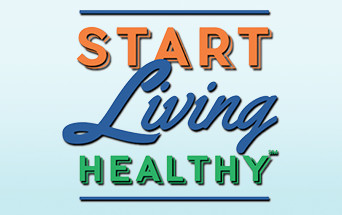Coronary Heart Disease Conditions & Heart Attacks
Click Here for:
Coronary Artery Disease
Heart Attack
Angina
Heart Failure
Arrhythmia
What is Coronary Artery Disease?
Coronary artery disease also known as coronary heart disease is caused by the build-up of plaque in the arteries that supply oxygen-rich blood to the heart. Plaque, a mixture of fat, cholesterol, and calcium deposits, can build up in the arteries over many years.
Over time, this plaque can cause the narrowing and hardening of the coronary arteries, a condition called atherosclerosis.
Coronary artery disease can often be symptom-free, but people with coronary artery disease have an increased risk of angina (chest pain or discomfort), heart attack, heart failure, and cardiac arrhythmias.
Treatment for Coronary Artery Disease
If you have coronary artery disease, there are steps you can take to lower your risk for having a heart attack or worsening heart disease. Your doctor may recommend lifestyle changes such as eating a healthier diet, exercising, and not smoking.
Medications may also be necessary. Medicines can treat coronary artery disease risk factors such as high cholesterol, high blood pressure, an irregular heartbeat, and low blood flow. In some cases, more advanced treatments and surgical procedures can help restore blood flow to the heart.
To Learn More About Coronary Artery Disease Visit These Websites:
National Heart, Lung, and Blood Institute – What is Coronary Heart Disease?
What is a Heart Attack?
Heart attacks most often occur as a result of coronary heart disease, also called coronary artery disease. Coronary heart disease is a condition in which a waxy substance called plaque (plak) builds up inside the coronary arteries. These arteries supply oxygen-rich blood to your heart.
When plaque builds up in the arteries, the condition is called atherosclerosis (ath-er-o-skler-O-sis). The buildup of plaque occurs over many years.
A heart attack occurs if the flow of oxygen-rich blood to a section of heart muscle suddenly becomes blocked. If blood flow isn’t restored quickly, the section of heart muscle begins to die.
Signs and Symptoms of a Heart Attack
It is important to learn the signs and symptoms of a heart attack, act fast, and call 9-1-1 immediately if you think you or someone you know is having a heart attack.
You may have one or several of these signs. Seek help immediately.
- Chest discomfort: Uncomfortable pressure, squeezing, fullness, or pain in the center of the chest that lasts more than a few minutes, or goes away and comes back.
- Discomfort in other areas of the upper body: This may be felt in one or both arms, the back, neck, jaw, or stomach.
- Shortness of breath: May often occur with or before chest discomfort.
- Cold sweats
- Nausea
- Light-headedness
Treatment for Heart Attack
The good news is that excellent treatments are available for heart attacks. These treatments can save lives and prevent disabilities. Heart attack treatment works best when it’s given right after symptoms occur.
A heart attack requires emergency medical attention and timeliness is critical. If you think you’re having a heart attack, call 9-1-1. If you witness a heart attack, initiate the chain of survival shown in this diagram.

Timely arrival to the hospital is critical to receive life-saving treatment. Heart attacks can be treated with medication, such as clot-busting drugs and/or aspirin, or angioplasty (also known as percutaneous coronary intervention).
To Prevent a Heart Attack
- Know your blood pressure and cholesterol numbers
- Work with your health care provider to control high blood pressure and high cholesterol
- Manage diabetes- know your blood glucose/ A1c and work with your doctor to get them under control
- Change your lifestyle to include healthier behaviors. This will help you to achieve and maintain a healthy weight, and reduce your risk of heart disease.
- Choose foods that are low in saturated fat, trans fat and cholesterol
- Get at least 30 minutes of moderate physical activity on most, preferably all, days of the week.
- If you use tobacco products, quit. There are many resources, including the Hawaii Tobacco Quitline at 1-800-QUIT-NOW (784-8669), to help you quit.
To learn more about Heart Attack visit these websites:
American Heart Association – Heart Attack
What is Angina?
Angina, a symptom of coronary heart disease, is chest pain or discomfort that occurs when the heart muscle is not getting enough blood. Angina may feel like pressure or a squeezing pain in the chest. The pain may also occur in the shoulders, arms, neck, jaw, or back, and it may feel like indigestion.
To learn more about Angina visit these websites:
National Heart, Lung, Blood Institute – What is Angina?
CDC-About Heart Disease/ Other Related Conditions
Sources: https://www.cdc.gov/heartdisease/other_conditions.htm, accessed October 23, 2024.
What is Heart Failure?
Heart failure occurs when the heart cannot pump enough blood and oxygen to support other organs. Heart failure is a serious condition, but it does not mean that the heart has stopped beating.
The most common causes of heart failure are coronary artery disease, high blood pressure, and diabetes.
About one in five people who have heart failure die within one year from diagnosis.
Early diagnosis and treatment can improve quality of life and life expectancy for people who have heart failure. Treatment usually involves taking medicines, reducing salt in the diet, and getting daily physical activity. People with heart failure also track their daily symptoms and discuss them with their doctors.
Signs and Symptoms of Heart Failure
Common symptoms of heart failure include:
- Shortness of breath during daily activities.
- Having trouble breathing when lying down.
- Weight gain with swelling in the legs, ankles, or lower back.
- General fatigue and weakness.
To learn more about Heart Failure visit these websites:
National Heart, Lung, and Blood Institute – What is Heart failure?
National Heart, Lung, and Blood Institute – How is Heart Failure Treated?
What is Arrhythmia?
Arrhythmias (ah-RITH-me-ah) are irregular, or abnormally fast or slow, heartbeats. Some arrhythmias are serious. One example is ventricular fibrillation. This type of arrhythmia causes a severely abnormal heart rhythm that leads to death unless treated right away with an electrical shock to the heart (called defibrillation). Other arrhythmias are less severe, but can develop into more serious conditions such as atrial fibrillation.
To learn more about Arrhythmias visit these websites:
American Heart Association – Arrhythmias
CDC Fact Sheet: Atrial Fibrillation
MayoClinic – Heart Arrhythmias
National, Heart, Lung, and Blood Institute – What is an Arrhythmia?
Sources: https://www.cdc.gov/heartdisease/other_conditions.htm, accessed October 23, 2024.



